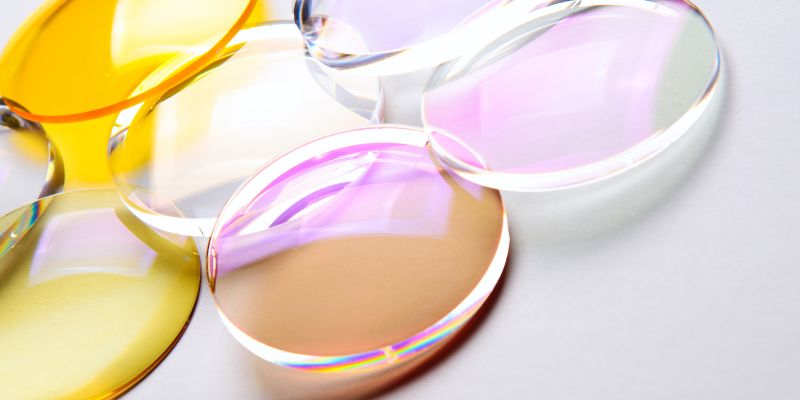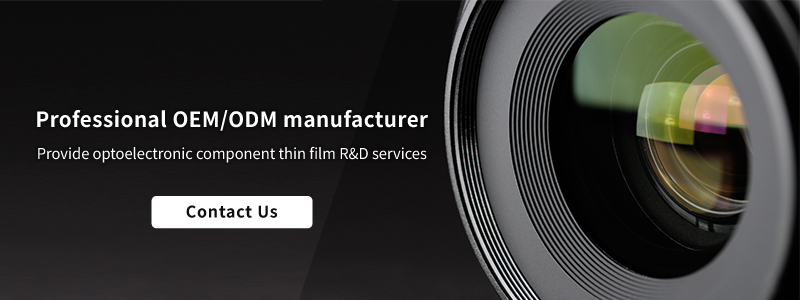BLOG
- Home
- Blog
- Optical Coating
- What is AR (Anti-Reflection) coating?
What is AR (Anti-Reflection) coating?
October 30,2023

AR coating stands for Anti-Reflection coating and it is applied in many different fields. The technology can reduce generation of glares, fatigue to eyes, or improve color performance and visual effects of digital screens. AR coating is likely to be used in common daily necessities and digital products such as spectacle lenses, camera lenses and digital display screens. What is AR coating anyway? In this article, we will explore the fundamental principles, types, advantages, and applicable fields of AR coating, so readers can understand the technology better.
What is AR (Anti-Reflection) coating? What are the principles?
AR coating is a type of optical coatings. It is usually applied on products such as glasses, lenses, and screens mainly for reducing light reflection, improving transmittance and assisting users with better visual qualities. The principles of AR coating work by coating specified film materials onto a substrate. With designed film thickness and refractive index, the effects of destructive interference, reduction of light reflection and refraction are achieved when light passes through the coating.〈Extended reading:Anti-Reflection (AR) Coatings〉
What advantages does AR coating have?
Reduction of visual fatigue
The main function of AR coating is to reduce visual fatigue for users. Such application is always required for mobile phones, computers, cameras, and spectacle lenses. AR coating reduces scattering lights and glares into human eyes, as well as the reflection in front of and behind spectacle lenses. This can effectively reduce fatigue in human eyes; at the same time, it also offers exceptional visual clarity.Maintaining good color saturation
AR coating is often applied on protector films for mobile phones. Although glossy glass films in the past were able to maintain color saturation displayed on screen, reflective light was generated easily, which led to eye fatigue. With the latest AR coating technology, numerous advantages such as reducing light reflection, increasing light transmittance, maintaining image clarity and color performance on screen can now be combined at once.Improvement of lens durability
The use of AR coating on lenses does not only improve visual clarity, but the lenses are also easier to clean due to the surface treatment of external sealing layer, which extends the service life.Types of AR coating
Single-sided AR coating
The single-sided AR coating technology can effectively reduce light reflection, enhance resolution of lenses and touch panel of digital equipment, as well as customized wavelength of a specific color to be reflected. Through experiments and tests on substrates applied with single-sided AR coating, it was revealed that the maximum light transmittance can reach 95%, and the light reflection could reduce to 0.3% or less.Double-sided AR coating
The double-sided AR coating technology is often used for protective cover of LCD screens for providing bright and clear display, which creates better experience of viewing. Despite single-sided or double-sided AR coatings, the reflective any color wavelengths of AR coating can be defined freely. For substrate surface applied with double-sided AR coating, the maximum light transmittance can be improved to 98%, and the light reflection can be reduced to 0.2% or less.Common applications of AR coating
Consumer 3C (Computer, Communication and Consumer electronics) products
Among consumer 3C products, the most extensive application of AR coating would be the screen protectors on mobile phones. However, the number of stacking layers, methods and coating materials used for AR coating on protectors would vary, thus the results of light reflection and transmittance from products would also differ. To address diverse demands from consumers nowadays, screen protectors with water repellent coatings, anti-blue light and non-conductive metal functions are developed progressively. The product functions are no longer limited to reduction of light reflection, refraction and improvement of light transmittance.Spectacle lenses
There are numerous advantages of applying AR coating on spectacle lenses. In addition to removing most of the light reflection in front of and behind the lenses, users are provided with clear vision and reduction of eye fatigue, as well as the results of easy lens cleaning and the extended service life. AR coating can prevent glares. With this feature, users can maintain clear vision and ensure safety during activities at night or under an environment with dim light. Moreover, particular attention is needed for lens care with correct methods. After washing the lens with clean water, it must be wiped dry with a lens wiper. The lens may not be placed under an environment of high temperature fluctuation and high humidity.Photography equipment
The optical components used for photography equipment are extensively diverse. Normally, different types of filters are utilized to reduce the amount of incoming light rays, block UV, or increase the saturation of certain colors. Both the AR coating and filter can assist with reduction of light reflections and glares. In addition, AR coating can also reduce light spots, increase light transmittance and optical efficiency, which perfect the photo shoot .〈Extended reading:What are Filters? Let’s Learn about 7 Common Filters and Their Applications!〉
Automobile applications
AR coating is mostly used on wind-shields of automobiles. The process of glass coating with resistance to light reflections can provide multiple effects such as preventing surface scratches, resisting corrosions, sustaining high temperatures, lightweight, reducing reflections and glares. With mutual interference and offset between reflective light and incident light, the principle cannot only reduce light reflections effectively, but also increase light transmittance through glass. The maximum light transmittance can reach 92% to 96%. The windshield processed with AR coating can increase visual clarity and driving safety, as well as reducing the interference from rain or mist.〈Extended reading:What are the Different Types of Glass Processing and Glass Finishing?〉

